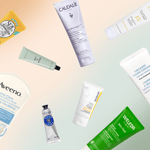Household plastic to be labelled dangerous substance
Today’s Globe and Mail reports that Health Canada will be the first regulatory body in the world to call bisphenol
Today’s Globe and Mail reports that Health Canada will be the first regulatory body in the world to call bisphenol A (BPA)—a see-through, shatter-proof plastic found in sport water bottles and the lining of most tin cans—a dangerous substance. This designation could pave the way for the hormonally-active chemical to be listed as toxic under the Canadian Environmental Protection Act, and for the government to take its first steps toward controlling it.
Rick Smith, executive director of Environmental Defense, a group that has been campaigning for a ban on the chemical from food containers, told The Globe and Mail, "Bisphenol A is in every Canadian home. It threatens the health of every Canadian. Moving against it would be a hugely significant victory for public health and the environment."
Earlier this month, the Center for Science in the Public Interest, the nonprofit group that publishes Nutrition Action Healthletter, called for women who are pregnant or breastfeeding to consider reducing their exposure, and that of their infants and young children to BPA by avoiding most canned soups and drinks and many hard-plastic reusable water bottles.
As reported in the premiere issue of Best Health, bisphenol A is a suspected hormone disrupter and has been found to stimulate prostrate cancer cells. (Check out Toxic Truths for other harmful household substances.)
Following the BPA alarm, many specialty retailers in Canada have pulled polycarbonate plastic containers off the shelves and replaced them with BPA-free bottles, but I haven’t taken stock of my own cupboards. What about you? Have you replaced plastic water bottles or baby bottles? Look for plastics with the number seven inside the recycling symbol.




